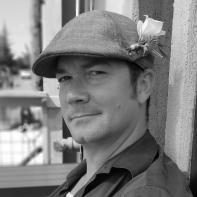
Authors Talk: Catharina Coenen
Today we are pleased to feature Catharina Coenen as our Authors Talk series contributor. In this podcast, she invites her nephew, Christopher Van der Meyden, to discuss her nonfiction essay, “Stain,” published in SR’s Issue 23.
“Stain” explores Catharina’s need to clean up the shattered eggs someone had thrown at the garage and driveway of her neighbor who was recently arrested by the FBI. As she reflects on this event through her writing, she notices the strong connections between her actions and the history of her family and country.
Catharina explains that she had a difficult time understanding her physical and emotional reactions to seeing the arrest: shaky knees and hands, circular thoughts, and a feeling of anger and fear despite not having any immediate threats. She says, “I started writing as a way to help myself understand why I was experiencing these physical reactions and mental confusion.”
Christopher and Catharina also take a closer look at the way the essay uses family stories organically throughout the piece as “a way to ground [Catharina] in the present—to come back from a traumatic past that explained the inner turmoil to the present tense where there was no physical danger to [Catharina] or anyone else in that moment.”
As a biologist, Catharina also makes connections between the structure of her essay and recent developments in our understanding of the biology of trauma. Although “physical responses to trauma can be encoded across generations,” Catharina explains, “storytelling and an anchoring of the person in the present” can undo this transgenerational trauma. Catharina notices her essay mimics this necessary healing process, allowing her to understand and process her reactions.
You can read Catharina’s work, “Stain,” in Issue 23 of Superstition Review.






 Authors Talk: DJ Lee
Authors Talk: DJ Lee Authors Talk: Thomas Gresham
Authors Talk: Thomas Gresham Today we are pleased to feature author Laurie Blauner as our Authors Talk series contributor. She discusses her experience working with creative nonfiction in her work “I Was One of My Memories” in which she writes to grieve the loss of her pet cat, Cyrus, but the book encompasses much more than that. Rich Ives joins her to talk about the ins and outs of writing creative nonfiction and distinguish its significance and strength as a literary form.
Today we are pleased to feature author Laurie Blauner as our Authors Talk series contributor. She discusses her experience working with creative nonfiction in her work “I Was One of My Memories” in which she writes to grieve the loss of her pet cat, Cyrus, but the book encompasses much more than that. Rich Ives joins her to talk about the ins and outs of writing creative nonfiction and distinguish its significance and strength as a literary form.